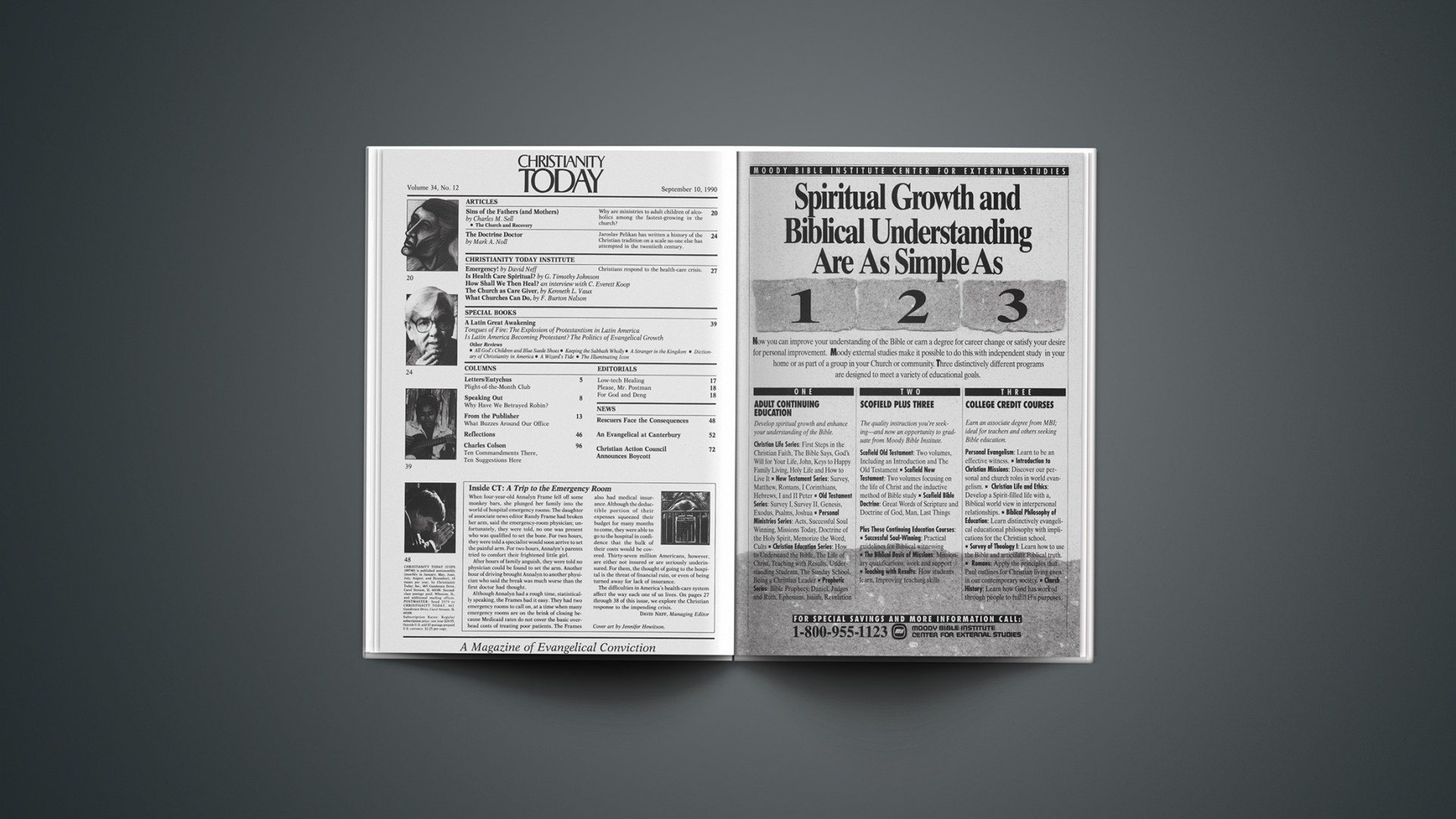When four-year-old Annalyn Frame fell off some monkey bars, she plunged her family into the world of hospital emergency rooms. The daughter of associate news editor Randy Frame had broken her arm, said the emergency-room physician; unfortunately, they were told, no one was present who was qualified to set the bone. For two hours, they were told a specialist would soon arrive to set the painful arm. For two hours, Annalyn’s parents tried to comfort their frightened little girl.
After hours of family anguish, they were told no physician could be found to set the arm. Another hour of driving brought Annalyn to another physician who said the break was much worse than the first doctor had thought.
Although Annalyn had a rough time, statistically speaking, the Frames had it easy. They had two emergency rooms to call on, at a time when many emergency rooms are on the brink of closing because Medicaid rates do not cover the basic overhead costs of treating poor patients. The Frames also had medical insurance. Although the deductible portion of their expenses squeezed their budget for many months to come, they were able to go to the hospital in confidence that the bulk of their costs would be covered. Thirty-seven million Americans, however, are either not insured or are seriously underinsured. For them, the thought of going to the hospital is the threat of financial ruin, or even of being turned away for lack of insurance.
The difficulties in America’s health-care system affect the way each one of us lives. On pages 27 through 38 of this issue, we explore the Christian response to the impending crisis.
DAVID NEFF, Managing Editor










